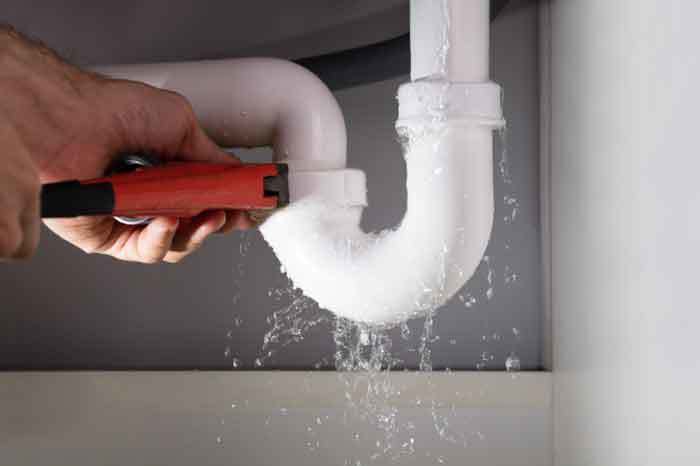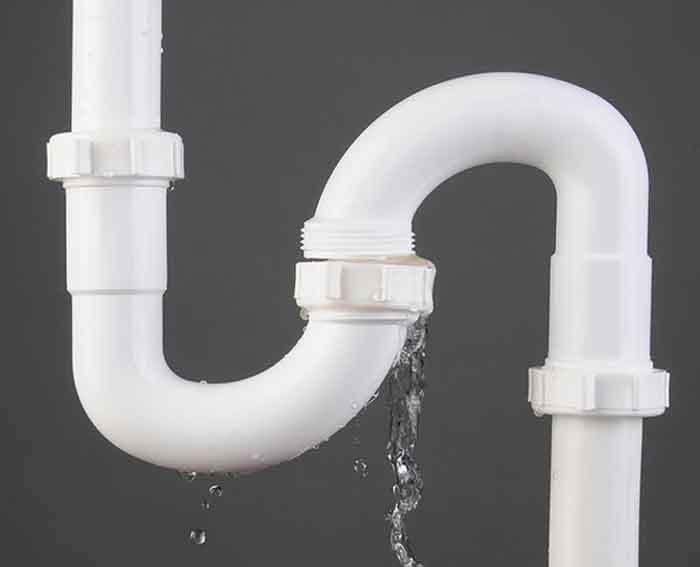Disclaimer: This post may contain affiliate links, meaning we get a small commission if you make a purchase through our links, at no cost to you. For more information, please visit our Disclaimer Page.
Having high water pressure surely feels like a good thing, but, you couldn’t even imagine the downsides of that. On the other hand, people with low water pressure will certainly want to increase their water pressure by a significant amount.
Anyhow, high water pressure can damage your plumbing system and cause a variety of problems in your household. We all know that water pipes can only withstand a certain amount of pressure, therefore, having high water pressure can cause quite the mess.
So, in case you have quite high water pressure and it’s causing you problems inside your household, it is important to lower it down a bit. But first, let’s see a bit more about high water pressure and how it affects your plumbing.

symptoms of high water pressure in house
As we all know, water pressure actually refers to the water and how it fast goes through the pipe in your plumbing system. Also, water pressure is quite important when it comes to faucets and showerheads as well.
Nevertheless, standard water pressure is typically around 60-80 PSI. However, it is not a big deal if water pressure goes a bit higher, but, it shouldn’t go above 100 PSI. That’s why it is important to lower it down if it does.
Anyhow, your whole plumbing system is designed to withstand a certain amount of pressure. And, if the water pressure is really high, that will create problems. Simply speaking, high water pressure will definitely damage your plumbing to the point of no repair.
So, what are the signs of high water pressure? You should check for:
- Leaks
If your water pipes are leaking at some point, the water pressure is too high. Due to the fact that water rushes through the pipes under high pressure, these pipes are not able to withstand that pressure and they start to crack.
These cracks will be the first thing you will notice after a while, and, leakage will follow. So, in case you see water stains or water under your pipes, you should definitely check those pipes for leakage.
- Noisy Pipes
For most people, noisy pipes are quite unbearable. The sound of water running through your pipes is quite noticeable and it will definitely bother you after some time.
Anyhow, if you hear strange noises coming from your pipes, then your water pressure is too high. And, if you don’t take measures, high water pressure will damage your pipes.

- Water Squirting
Possibly the most noticeable and the most common sign of high water pressure is water spitting from faucets and showerheads. If water spits out fast out of your faucet, then you definitely are dealing with high water pressure.
- Drain Connected Appliance
We all have a different kind of appliances at home that are connected to our drain system. Now, if some appliances like a water heater, dishwasher, or even a washer machine are constantly malfunctioning for some reason, high water pressure could be the cause.
How Do You Reduce the Water Pressure in Your House?
So, we already saw the signs of high water pressure, now, it is time to see how to reduce it. High water pressure can create some really big problems in your plumbing. That’s why you should act as soon as you notice something.
In that light, the first thing you should do is to measure the PSI in your pipes. And, if the readings show that your PSI is above 80, you will need to lower it down a bit. How? Let’s explain.
The key component to lower high water pressure is pressure reducing valve. If you don’t have one, purchase it immediately. Anyhow, here is what you will need to do to lower the pressure.

Step 1 – Loosen the lock nut
The first thing you need to do is to find the pressure reducing valve. After that, you should loosen the lock nut that is positioned on the pressure reducing valve so you can unscrew it.
It is quite important to do this part slowly since you don’t want to break or damage something. So, after you successfully loosen the lock nut, the next thing you should do is to unscrew it.
This will allow you to advance to the next step and adjust the valve.
Step 2 –Adjust the valve
Now, after you did everything properly so far, it is time to find the adjustment valve. Once you do that, you should be able to adjust it, but, you will need a socket wrench for that.
Anyhow, take the socket wrench and place it on the nut. This will allow you to easily turn the nut either counterclockwise or clockwise.
If you want to reduce the pressure, you will need to turn the nut counterclockwise. On the other hand, by turning the nut clockwise, you will increase the pressure even more.
The important thing to know when turning the nut is that you need to do it slowly and carefully. Don’t make any sudden movements or use unnecessary force.
Step 3 – Measure PSI again
Once you turned the nut counterclockwise, it is time to measure the pressure again. Do it as you did it earlier. Simply read the meter and determine if the pressure is dropping. If that’s the case, you are good to go.
On the other hand, you will need to turn the nut even more.
Step 4 – Screw the lock nut
The last thing you need to do is to put everything back together. So, first take the socket wrench and screw the on the pressure reducing valve.
Make sure to do it carefully or else you might damage something since these parts are sensitive.
Conclusion: Reducing Water Pressure In Your House
If you wanted to know how to reduce water pressure inside your house, there you go. Just follow these few steps and you will be just fine.
Remember to check for the signs of high water pressure first so you can actually do the right thing and reduce it.

